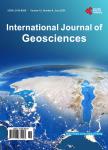Intra-Seasonal Variability of Aerosols and Their Radiative Impacts on Sahel Climate during the Period 2000-2010 Using AERONET Data
Intra-Seasonal Variability of Aerosols and Their Radiative Impacts on Sahel Climate during the Period 2000-2010 Using AERONET Data作者机构:Laboratoire d’Océanographie des Sciences de l’Environnement et du Climat UFR des Sciences et Technologies Université de Ziguinchor Ziguinchor Sénégal Laboratoire de Physique de l’Atmosphère et de l’Océan Siméon Fongang Université Cheikh Anta Diop Dakar-Fann Sénégal
出 版 物:《International Journal of Geosciences》 (地球科学国际期刊(英文))
年 卷 期:2013年第4卷第1期
页 面:267-273页
学科分类:07[理学] 070601[理学-气象学] 0706[理学-大气科学]
主 题:AERONET Aerosol Optical Depth Radiative Forcing
摘 要:This paper presents a study using in situ measurements (AERONET data) to characterize the intra-seasonal variability of aerosols and their shortwave radiative impacts on Sahel (11N - 18N and 20W - 15E) climate using a long time series (2000 to 2010) from AERONET data. We first used the MISR aerosol optical depth (AOD) averaged between 2000 and 2010 to identify dust maxima regions. They are mainly located over Eastern Mauritania-Northern Mali and Eastern Niger-Western Tchad (near the Bodele depression). Moreover the aerosol loading is stronger during the spring (MAM) and particularly during the summer (JJA). The analysis of AERONET data at 4 Sahelian stations (Dakar, Agoufou, Banizoumbou and Ouagadougou) shows that Sahel is under dust influence all year long. The dust season is mainly located between March and October, with two peaks of AOD recorded in March and June;while the maximum of biomass burning activity is recorded in winter (December to February). The radiative forcing of aerosols on the Sahelian climate results mainly in a cooling as well as at the surface than at the top of the atmosphere (TOA) but the forcing is stronger at the surface and particularly during the summer (JJA) and spring (MAM) periods. Although there is not a sharp difference between DJF and SON periods from a station to another one when considering the aerosol loading (AOD), the radiative forcing is stronger at the surface and weaker at the TOA during DJF for most stations. The analysis of the force effectiveness (ratio between AOD and the radiative forcing) suggests that the BOA radiative forcing is mainly influenced by the nature of aerosols.



